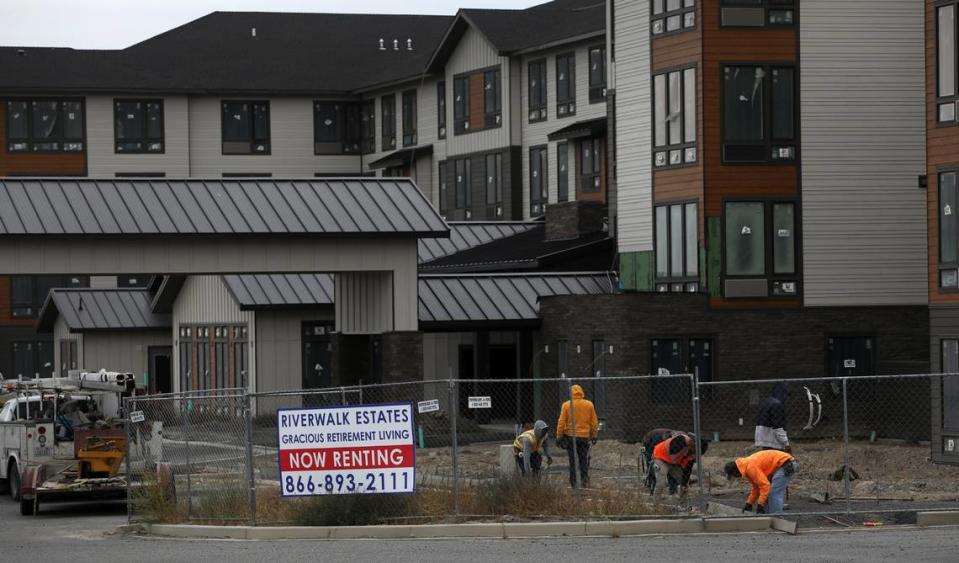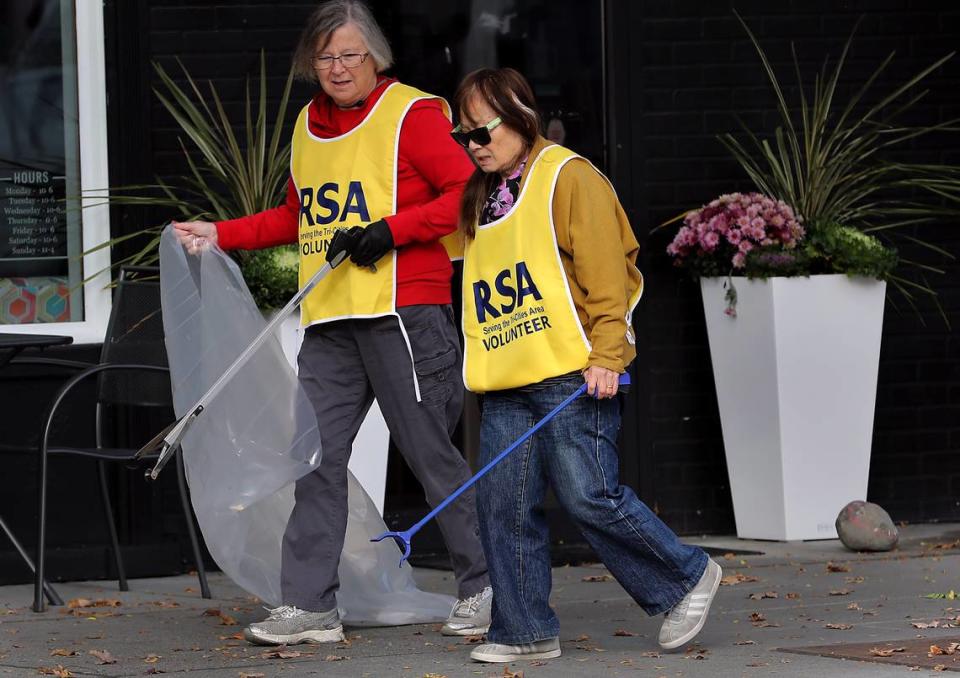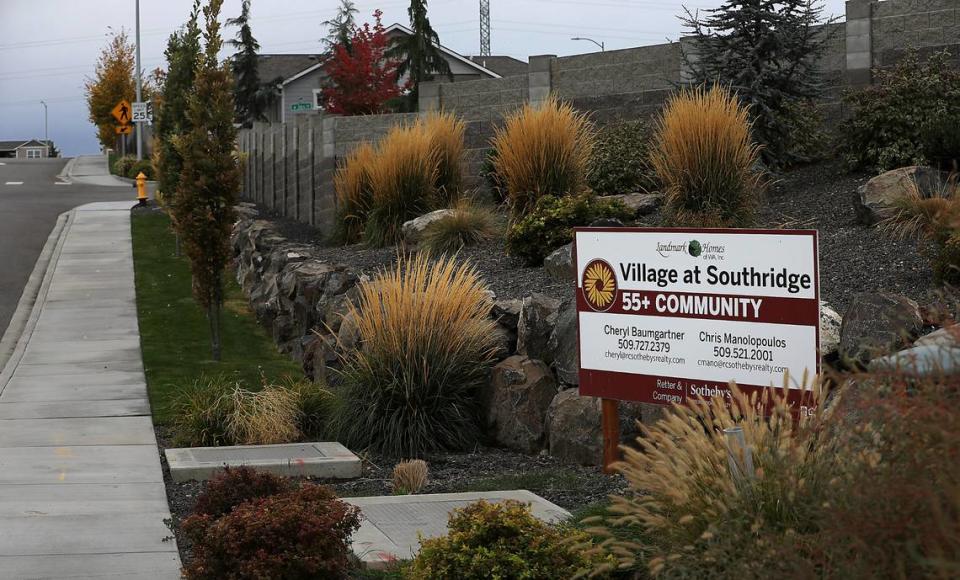Seniors 65+ are fastest growing part of the Tri-Cities community. Here’s why
Sally and Don Hanson first saw the Tri-Cities while driving between Pullman, where their children went to college, and Kirkland, where they operated a compounding pharmacy and gift shop.
They’d decided to take a different route and remembered liking what they saw.
When the Western Washington duo retired, the Tri-Cities landed on their list of possible places to live.
Their reasons are familiar to anyone who ever listened to a local booster tout the area to visitors.
Don Hanson cited the 300 days of sunshine, affordable home prices, low taxes and reasonable utility rates and plenty of opportunities to paddle kayaks on local rivers as reasons to retire here.
The couple confirmed their impression over three weekend visits, then moved to Richland about six years ago.
Today, they’re firmly invested in the community as volunteers. Sally continues to write about vehicles as an automotive journalist, reviewing new vehicles.
Job growth may have helped push the Tri-Cities population over 300,000 a few years ago, but people 65 and over are providing a big push.
Seniors are one of the fastest growing slices of the demographic pie, according to data from the 2000, 2010 and 2020 census counts.
The Tri-Cities experienced massive growth between 2000 and 2020, reaching 303,000 people, according to the census. That’s a gain of 112,000 people or 58% in the span of two decades.
Aging population
As with the rest of the U.S. and Washington, the Tri-Cities population is aging.
In 2000, people age 65 and over accounted for 10% of all Tri-Citians. By 2020, it was 14%. As a share of the total, the percentage of seniors expanded by 42%.
For comparison’s sake, young adults age 20-34 remain about 20% of the Tri-Cities population, unchanged between 2000 and 2020.
The percent of younger people is slightly higher in Franklin County because its residents are younger. It is slightly lower in Benton County, where they are older.
But over time, the number of young adults has remained consistent, about one in every five residents.

Sunshine
Older residents say they choose the Tri-Cities for any number of reasons. Some are natives. Others came for careers and stayed. Still others are drawn by children and grandchildren who live here.
The diversity was on display in mid-October when a small group of seniors gathered at the Richland Community Center to clean up litter with a city park ranger.
They motored over to John Dam Plaza, then fanned their way down The Parkway, plucking discarded trash as they went. The Tri-City Herald tagged along to visit with seniors about their experiences living here.
Eva Elwell said she moved to the Tri-Cities in 1993 from Los Angeles for her husband’s work. Originally from Taiwan, she’s stayed for the seasons, the rivers and the mountains.

“I love it here because it has four seasons,” she said. “Spring, summer, fall, winter, equally.”
Lucy Rademacher said the cost of living has kept her here. She lived here in the 1980s before settling in Colorado. She and her husband returned in 2020, moving to a south Richland neighborhood that had been a desert when they left.
Rademacher said she’s seen the community develop in the interim.
She recalled a social “desert” when she originally lived her. Today, there are restaurants and clubs and other activities.
She cites the Tri-Cities Airport as a key asset. Since her family lives elsewhere, having a thriving commercial airport lets her visit when she likes.
Affordable housing
Polly Parton, president of the Richland Seniors Association, is a long-time Tri-Citian who retired from Lamb Weston Inc.
RSA provides activities, classes and volunteer activities for seniors from throughout the Tri-Cities, despite its name.
Its nearly 400 members come from all over the U.S., Parton said.
While young home buyers may disagree, she said cost of living and affordable housing is a draw for newcomers, she said.
“Even though we complain a lot, it is still affordable,” she said.
The median Tri-Cities home cost $430,000 in August, according to the Tri-City Association of Realtors, well below the $800,000-plus median recorded in Seattle and the $585,000 for Washington state.
Cheryl Baumgartner, a Realtor with Retter & Company Sotheby’s Realty in the Tri-Cities, has focused on older buyers for more than 25 years, starting when she represented the builder at the Village at Canyon Lakes, a 55-plus neighborhood in Kennewick.
She is representing the Village at Southridge, another 55+ community of single family homes that just a few miles away.

Baumgartner jokes that she once sold to seniors and then became one herself. The growth in the overall share of older adults is no surprise, she said.
She confirmed that weather and city services are important. And despite rising home prices, the Tri-Cities is still affordable to people who have sold homes in pricier markets. Most buyers don’t need mortgages, she said.
“We’re constantly asked why we don’t have more 55 and over housing. it takes a builder and someone to put in the amenities. You have to have the right location. People ask why there aren’t more,” she said.
Family connection
Jamie Lunstad moved to Kennewick about two and a half years ago.
She’s a Washington native who lived and owned a business in Cle Elum on the I-90 corridor for more than 30 years.
In retirement, she and her late husband traveled between Washington and Arizona as snowbirds. After his death four years ago, she wanted to simplify by living closer to family.
When her daughter told her a neighbor’s home in Kennewick’s Creekstone neighborhood was for sale, she visited immediately and bought it within days. Now, they’re neighbors.
“I just wanted to be where my kids could take care of me if they have to,” she said.
What’s missing?
The Tri-Cities regularly appears high up on lists of places to retire, typically because Washington has no income tax and because there are hundreds of wineries in the Mid-Columbia.
The reality is more complicated. The AARP Livability Index gives the Tri-Cities middling scores based on the cost of housing, transportation, the environment, community engagement, transportation, access to healthcare and more.

The national average is 50, on the Index’s 100-point rating system.
Washington earns an above-average score of 53, but the four cities of the Tri-Cities rank lower: Kennewick, 49; Pasco 47; Richland 50 and West Richland 47.
Local rankings were dinged by their scores for health and engagement. Health measures access to healthcare and exercise opportunities while engagement measures community involvement and voter participation.
Access to healthcare is a regional issue and not restricted to the Tri-Cities.
In 2022, the University of Washington released its assessment of the medical workforce. Predictably, it found more working physicians in Western Washington than in Eastern Washington, even adjusting for population.
The study found 67 primary care physicians per 100,000 residents in Benton County and 26 per 100,000 in Franklin in 2021. Western Washington boasted 82.5 primary care physicians for every 100,000 residents.
“We have some needs,” Parton, of the Richland Seniors Association, said.
Sign Up: Boom Town Tri-Cities
Stay up to date on Tri-Cities growth and development with our weekly business newsletter. Get the latest on restaurant and business openings and closings, plus the region’s top housing and employment news. Click here to sign up. In your inbox every Wednesday.

